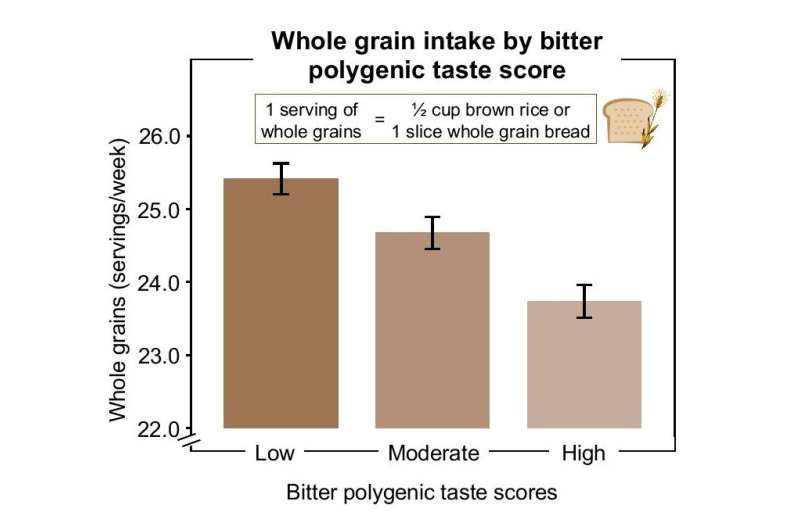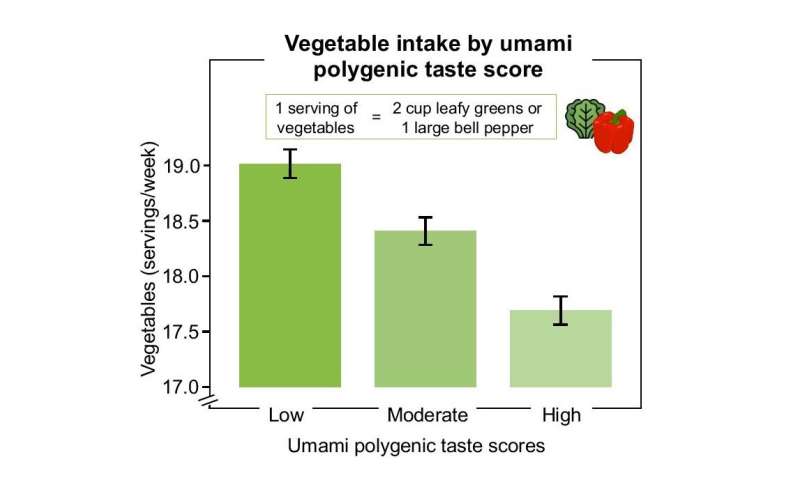
Preliminary findings from a new study involving more than 6,000 adults found that taste-related genes may play a role in determining food choices and could, in turn, influence cardiometabolic health. It is one of the first studies to examine how the genetics tied to perception for all five tastes—sweet, salt, sour, bitter, and umami (savory)—are associated with consumption of food groups and cardiometabolic risk factors.
The findings suggest that the genes that determine taste perception might be important to consider when developing personalized nutrition guidance aimed at improving diet quality and reducing risk for diet-related chronic diseases like obesity, type 2 diabetes and cardiovascular diseases.
“We know that taste is one of the fundamental drivers of what we choose to eat and, by extension, our diet quality,” said Julie E. Gervis, a doctoral candidate in the Cardiovascular Nutrition Lab at the Jean Mayer USDA Human Nutrition Research Center on Aging at Tufts University. “Considering taste perception could help make personalized nutrition guidance more effective by identifying drivers of poor food choices and helping people learn how to minimize their influence.”
For example, if people with strong bitter taste perception tend to eat fewer cruciferous vegetables, it might be recommended that they add certain spices or choose other types of vegetables that better align with their taste perception profile. “Most people likely don’t know why they make certain food choices,” said Gervis. “This approach could provide them with guidance that would allow them to gain more control.”
Gervis will present the findings online at Nutrition 2022 Live Online, the flagship annual meeting of the American Society for Nutrition held June 14-16.

Although previous studies have looked at genetic factors related to single tastes in certain groups of people, this new study is unique in that it examined all five basic tastes across a broad sample of U.S. adults. It is also the first to assess whether genetic variants responsible for taste perception are associated with intake of certain food groups and with cardiometabolic risk factors.
To do this, the researchers used data from prior genome-wide association studies to identify the genetic variants associated with each of the five basic tastes. They used this information to develop a new measure known as a “polygenic taste score” that provides a single estimate of the cumulative effect of many genetic variants on perception for a given taste. A higher polygenic taste score for bitter, for example, means that a person has a higher genetic predisposition to perceive bitter tastes.
The researchers then analyzed the polygenic taste scores, diet quality and cardiometabolic risk factors for 6,230 adults in the Framingham Heart Study. The risk factors included waist circumference, blood pressure and plasma glucose, and triglyceride and HDL cholesterol concentrations.
Overall, the analysis identified certain associations between taste-related genes with food groups and cardiometabolic risk factors. The data revealed that genes related to bitter and umami tastes might play a particular role in diet quality by influencing food choices while genes related to sweet seemed to be more important to cardiometabolic health.
For example, the researchers found that study participants with a higher bitter polygenic taste score ate nearly two servings less of whole grains per week compared to participants with a lower bitter polygenic taste score. The investigators also observed that having a higher umami polygenic taste score was associated with eating fewer vegetables, particularly red and orange vegetables, and that having a higher sweet polygenic taste score tended to be associated with lower triglyceride concentrations.
The researchers caution that the findings from this specific group of adults are not necessarily generalizable to everyone. “However, our results do suggest the importance of looking at multiple tastes and food groups when investigating the determinants of eating behaviors,” said Gervis. “Going forward, it will be important to try to replicate these findings in different groups of people so that we can understand the bigger picture and better determine how to use this information to devise personalized dietary advice.”
American Society for Nutrition

